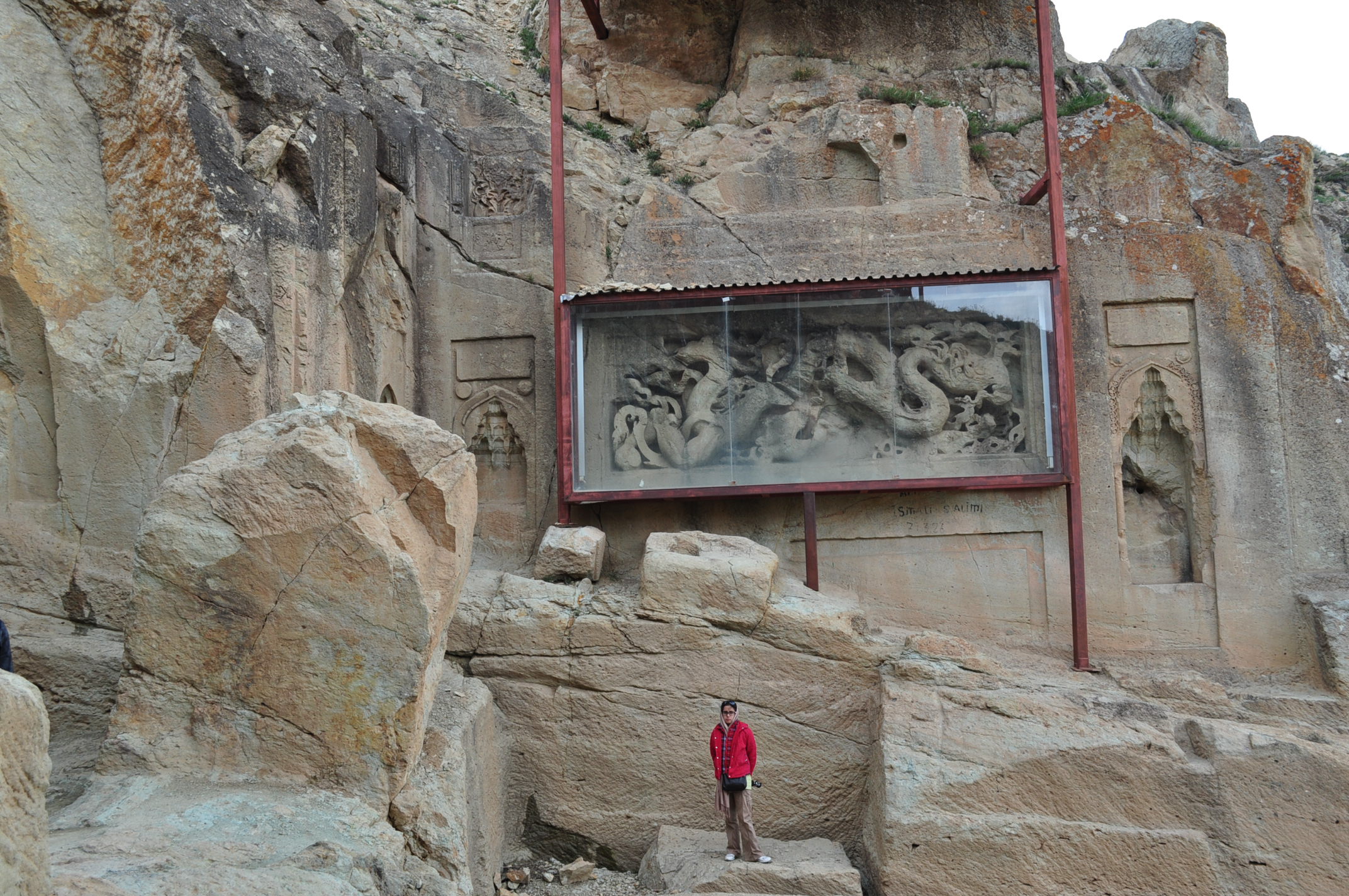The Dashkasan Dragon Temple, also known as the Dashkasan Temple, is a historical site located in the Republic of Azerbaijan. This ancient temple is carved into a massive rock formation and is renowned for its intricate dragon relief, which has given the temple its name. The temple is a testament to the region’s rich cultural and religious history, and it has attracted the attention of historians and archaeologists worldwide.
Get your dose of History via Email
Historical Background of Dashkasan Dragon Temple
Discovered in the 20th century, the Dashkasan Dragon Temple is a marvel of ancient architecture. It was likely built by the Caucasian Albanians, an ancient culture in the region. The temple’s exact origins remain shrouded in mystery, but it is believed to date back to the 1st century AD. The site later became a place of interest for various cultures, including the Seljuq Turks.
Not much is known about the temple’s discovery, as records are scarce. However, it is clear that the temple has been of significant interest since its unearthing. The temple’s builders are not definitively known, but it is attributed to the Caucasian Albanians due to its architectural style and regional history.
Throughout history, the temple has not been a major scene of historical events but has remained a silent witness to the passage of time. Its remote location has likely shielded it from the direct impact of regional conflicts. The temple’s purpose is not entirely clear, but it is thought to have been a place of worship or a sanctuary.
The temple’s dragon relief is its most notable feature, suggesting it held a special significance for its creators. The dragon symbol is often associated with power and protection, which might hint at the temple’s intended use. The site has not been the subject of extensive archaeological digs, leaving much of its history to speculation.
Despite its obscurity, the Dashkasan Dragon Temple is an important cultural landmark. It offers insights into the religious practices and artistic expressions of the people who once inhabited the region. The temple stands as a testament to the skill and beliefs of its creators, beckoning historians to uncover its secrets.
About Dashkasan Dragon Temple
The Dashkasan Dragon Temple is carved directly into a monolithic rock, showcasing the ingenuity of ancient stonemasonry. The temple’s facade features a prominent dragon relief, which has been remarkably preserved over the centuries. The dragon is intricately detailed, with its serpentine body coiling around the temple’s entrance.
The temple’s construction method involved carving into the rock face, a technique that required precision and skill. The choice of material, primarily the native stone, has allowed the temple to withstand the test of time. The rock’s durability has preserved the temple’s structural integrity and the fine details of the dragon relief.
Architecturally, the temple is modest in size, with a single chamber that once likely housed an altar or a sacred object. The interior is simple, with few adornments, directing attention to the elaborate exterior. The temple’s design reflects the religious and aesthetic values of its creators.
The temple’s remote location in the mountainous terrain of Azerbaijan has contributed to its preservation. The harsh climate and relative isolation have deterred extensive human interference, allowing the temple to remain relatively untouched. This seclusion has also added to the temple’s mystique, drawing visitors and researchers alike.
Despite its simplicity, the Dashkasan Dragon Temple is an architectural highlight in the region. Its unique blend of natural and man-made elements creates a harmonious balance, reflecting the ancient builders’ connection to their environment. The temple is a rare example of rock-cut architecture from the region, making it a valuable piece of cultural heritage.
Theories and Interpretations
The Dashkasan Dragon Temple has sparked various theories regarding its purpose and symbolism. The dragon relief is a focal point for interpretation, with some suggesting it represents a local deity or a symbol of protection. The temple’s religious significance is widely accepted, though the specifics remain a topic of debate.
Some theories propose that the temple was a site for dragon worship, a practice not uncommon in ancient cultures. The dragon’s prominence in the temple’s design supports this idea, though concrete evidence is lacking. The temple’s secluded location also suggests it may have been a pilgrimage site.
There are mysteries surrounding the temple, particularly regarding the identity of its builders and the meaning of its iconography. The lack of written records has made it difficult to match the temple with historical accounts. This gap in knowledge has left room for speculation and scholarly interpretation.
Dating the temple has been a challenge, but some methods have been employed. The style of the relief and the wear on the stone suggest a 1st-century origin. However, without extensive archaeological investigation, these estimates remain tentative.
The Dashkasan Dragon Temple continues to be a subject of fascination for historians and archaeologists. Its enigmatic nature invites further study, and each theory adds to the rich tapestry of interpretations. The temple’s true story is yet to be fully uncovered, making it a captivating puzzle for the academic community.
At a glance
Country: Republic of Azerbaijan
Civilization: Likely Albanians
Age: Estimated 1st century AD

